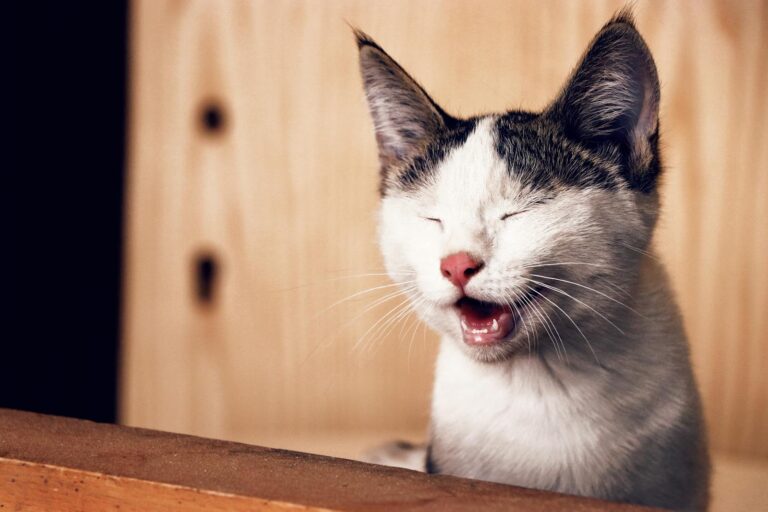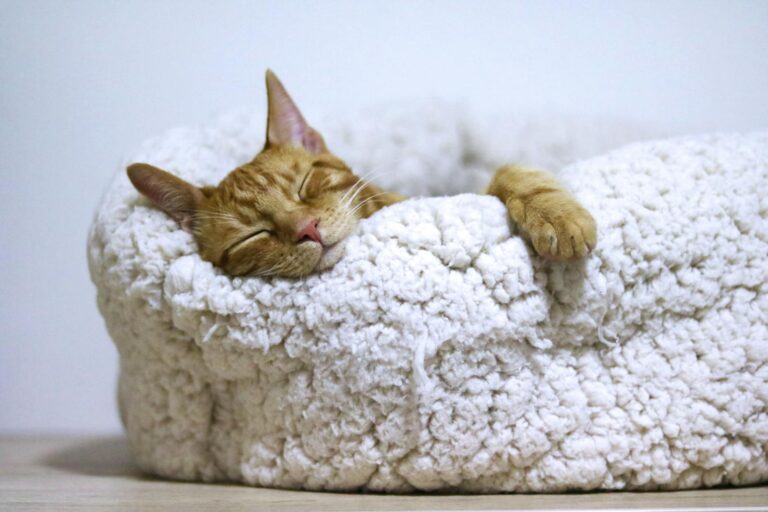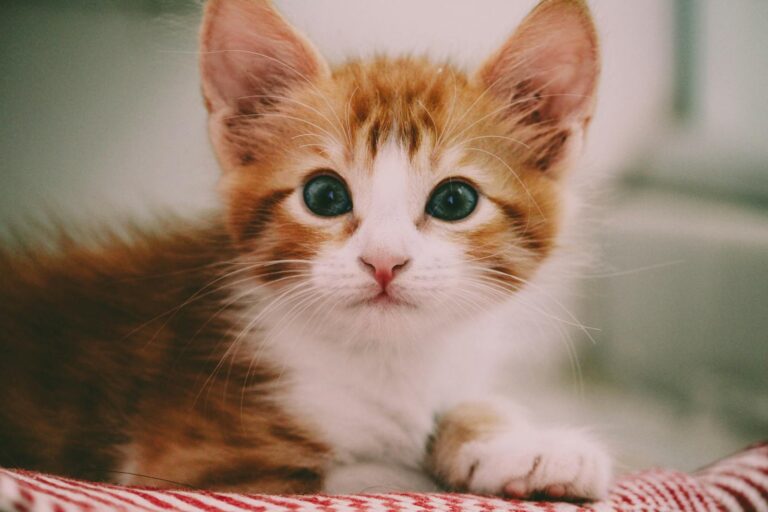Why Does My Cat Meow So Much? Understanding Feline Talk
Why does my cat meow so much? Understanding feline talk can be a perplexing question for many cat owners. Cats are known for their distinctive vocalizations, but excessive meowing can lead to concern and confusion. This guide is designed to help you decipher your cat’s meows and understand the reasons behind this behavior, whether it stems from medical issues, behavioral factors, or simply their unique way of communicating.
Deciphering Your Cat’s Meows: A Guide to Feline Vocalizations
Cats have a complex language of sounds, ranging from soft purring to loud yowling. To understand why your cat may be meowing excessively, it’s essential to first grasp the nature of feline vocalizations.
The Language of Cats: An Overview
Cats primarily communicate through body language and vocalizations. While humans often rely on words, cats use their voices to express a myriad of emotions and needs.
From soft “mews” to demanding “yowls,” each sound carries meaning. For instance, a gentle meow might indicate affection or a desire for attention, while a prolonged wail could signal distress or a request for food.
Understanding these nuances is crucial in interpreting what your feline friend is trying to convey.
The Evolution of Cat Vocalization
Interestingly, domestic cats have evolved their vocalizations significantly compared to their wild ancestors. Wild cats tend to communicate less with vocalizations and more through body language. In contrast, domestic cats have adapted their meows specifically to cater to human interaction.
They often develop specialized vocalizations that resonate with human caregivers, demonstrating how they’ve tailored their communication methods over generations to forge a stronger bond with people.
Breaking Down the Types of Meows
Meows can vary significantly in tone, length, and intensity.
- Short meows often serve as greetings or a call for attention.
- Long, drawn-out meows can indicate dissatisfaction or an urgent need for something.
- Chirps and trills are generally expressions of excitement or joy.
By paying close attention to the context and type of vocalization, you’ll gain insights into your cat’s current emotional state or needs.
Common Reasons for Excessive Meowing in Cats
Excessive meowing can stem from various causes. Understanding these reasons can help you better respond to your cat’s needs.
Hunger or Thirst: The Basic Needs
One of the most straightforward explanations for excessive meowing is hunger or thirst. If your cat is vocalizing persistently during meal times, they may be signaling that their bowl is empty or that they would like to be fed earlier than usual.
Ensure you maintain a consistent feeding schedule, and consider using puzzle feeders to keep them engaged and satisfied.
Attention-Seeking Behavior
Cats are social creatures, and they may meow excessively when seeking your attention. Whether they’re looking for playtime, petting, or just companionship, meowing can be their way of saying, “Hey, look at me!”
If you’ve been busy or distracted, try dedicating some quality time to your feline friend. Engaging in interactive play can often reduce their vocalization and foster a deeper bond between you.
Stress or Anxiety
Just like humans, cats can experience stress and anxiety, which may manifest as increased vocalizations. Changes in their environment, such as new pets, moving to a new home, or changes in your routine, can cause them to feel unsettled.
Recognizing sources of stress in your cat’s environment and working to mitigate these can greatly decrease excessive meowing. Creating a calm space where they feel secure can also aid in alleviating their anxiety.
Medical Conditions That Can Cause Increased Vocalization
If your cat’s excessive meowing persists despite addressing potential behavioral factors, a medical issue may be at play. It’s crucial to monitor other symptoms and seek veterinary advice if necessary.
Hyperthyroidism
One common condition that leads to increased vocalization is hyperthyroidism, particularly in older cats. This disorder results from an overproduction of thyroid hormones, leading to various symptoms including increased appetite, weight loss, and excessive vocalization.
If your cat exhibits signs of hyperactivity alongside their vocalizations, speak to your veterinarian about potential testing and treatment options.
Cognitive Dysfunction Syndrome
Similar to dementia in humans, cognitive dysfunction syndrome (CDS) can affect aging cats. This condition may lead to confusion and disorientation, prompting your cat to vocalize more frequently, especially at night.
Creating a consistent routine and providing mental stimulation can help manage symptoms, along with veterinary guidance.
Pain or Discomfort
Chronic pain or discomfort can also result in increased vocalization. Conditions such as arthritis, dental disease, or injuries may cause your cat to vocalize due to discomfort.
Pay attention to any changes in behavior, mobility, or eating habits, as these may indicate underlying health problems. Consulting your veterinarian for a thorough examination is essential if you suspect pain may be causing excessive meowing.
Behavioral Factors Contributing to Excessive Meowing
Behavioral issues can significantly impact your cat’s vocalizations. Understanding these factors can assist you in managing your cat’s meowing effectively.
Boredom: A Common Culprit
Cats require stimulation and enrichment to thrive. When left alone for extended periods without toys or activities, they may resort to excessive vocalization out of boredom.
Ensuring your cat has access to engaging toys, climbing structures, and interactive playtime can help alleviate boredom and reduce their need to vocalize excessively.
Attention-Seeking Due to Neglect
Sometimes, excessive meowing is a cry for help—it can be a sign that your cat feels neglected. If you observe that your cat becomes more vocal when you’re busy or distracted, consider adjusting your daily routine to incorporate more time spent together.
Building trust and connection will not only satisfy their emotional needs but can also lessen their reliance on vocalization to get your attention.
Socialization Issues
If your cat has had limited exposure to different environments or social interactions, they may display excessive vocalizations as a response to unfamiliar stimuli.
Gradually exposing them to new sights, sounds, and experiences can help them become more comfortable in various situations and reduce the tendency to meow excessively.
Strategies for Managing and Reducing Excessive Meowing
Once you’ve identified the underlying reasons for your cat’s excessive meowing, there are several strategies you can implement to manage their behavior effectively.
Establishing a Routine
Cats thrive on consistency, so establishing a regular routine can help create a sense of security. Schedule feeding times, play sessions, and quiet times to allow your cat to anticipate what’s coming next.
This predictability can lessen anxiety-related vocalizations and give your cat a clear outline of daily activities.
Providing Enrichment and Stimulation
Investing time and resources into creating a stimulating environment for your cat is vital. Consider adding scratching posts, interactive toys, and even outdoor enclosures or catios that allow them to explore safely.
Mental stimulation can significantly reduce boredom and, consequently, the need for excessive meowing as a means of entertainment.
Positive Reinforcement Training
Utilizing positive reinforcement techniques can change your cat’s behavior over time. If your cat begins to meow excessively, redirect their attention to an engaging activity or toy and reward them when they stop meowing.
Training your cat to associate silence with rewards can gradually teach them to vocalize less often.
When to Seek Veterinary Attention for Your Cat’s Meowing
It’s essential to know when to step in and seek professional help for your cat’s excessive vocalizations.
Signs Indicating Medical Concerns
If your cat’s meowing is accompanied by other concerning symptoms—such as lethargy, changes in appetite, or altered bathroom habits—it’s critical to consult your veterinarian promptly. These signs can indicate underlying health issues that need to be addressed medically.
Sudden Change in Vocalization Patterns
A sudden increase in vocalization can signal distress or discomfort. If you notice a significant shift in your cat’s behavior—especially if they begin vocalizing at odd hours or in unusual circumstances—it’s advisable to book an appointment with your vet for a thorough evaluation.
Age-Related Concerns
As cats age, changes in behavior are natural, but sudden shifts in vocalization may indicate conditions like cognitive dysfunction or other medical concerns. Regular check-ups with your veterinarian can provide peace of mind, ensuring that any age-related issues are adequately addressed.
Conclusion
Understanding why your cat meows so much requires a combination of observation, empathy, and knowledge of feline behavior. By considering the underlying reasons behind excessive vocalization—whether medical, behavioral, or environmental—you can take proactive steps to enrich your cat’s life and strengthen your bond. Remember, effective communication goes both ways; by tuning into your cat’s needs and desires, you can create a harmonious living environment for both you and your furry friend.







